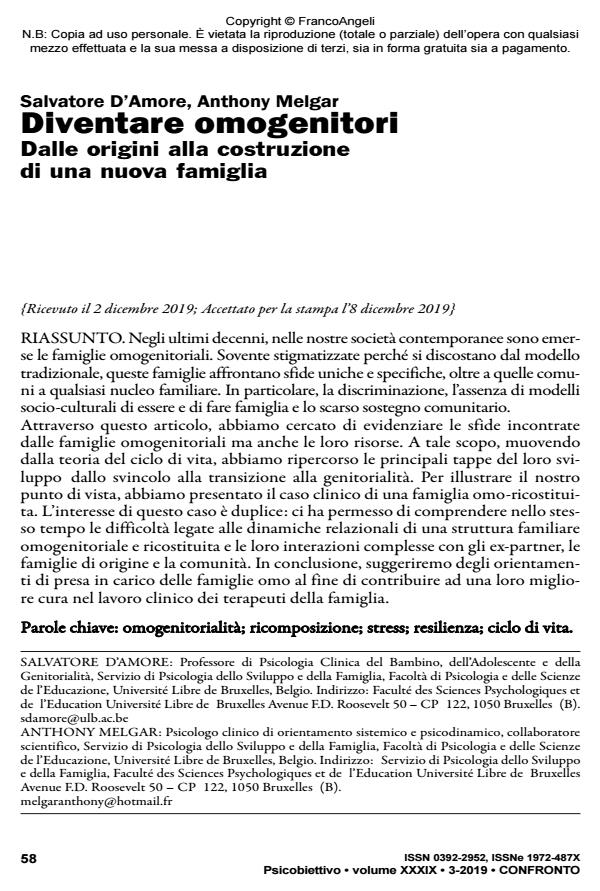Becoming same-sex parents. from the origins to building a new family
Journal title PSICOBIETTIVO
Author/s Salvatore D’Amore, Anthony Melgar
Publishing Year 2020 Issue 2019/3
Language Italian Pages 17 P. 58-74 File size 266 KB
DOI 10.3280/PSOB2019-003004
DOI is like a bar code for intellectual property: to have more infomation
click here
Below, you can see the article first page
If you want to buy this article in PDF format, you can do it, following the instructions to buy download credits

FrancoAngeli is member of Publishers International Linking Association, Inc (PILA), a not-for-profit association which run the CrossRef service enabling links to and from online scholarly content.
In recent decades, same-sex headed families have emerged in our contemporary societies. Often stigmatized because deviating from the traditional model, these families face unique and specific challenges, in addition to those common to all kinds of families. In particular, they face discrimination, the absence of socio-cultural models and lack of community support. Through this article, we tried to highlight the challenges and strengths of same-sex families. Starting from the theory of life cycle, we tracked the main key processes of their development from leaving home to the transition to parenthood. To illustrate our point of view, we presented a clinical case of a same-sex stepfamily. The interest of this case is twofold: it allowed us to understand the difficulties related to the relational dynamics of same-sex stepfamily structure and their complex interactions with ex-partners, families of origin and community. In conclusion, we suggest a series of guidelines to work with step same-sex families in order to contribute to better care in the clinical work of family therapists.
Keywords: Same-Sex Parenting; Step-Parenting; Stress; Resilience; Family Life Cycle.
- Les défis des familles d'aujourd'hui pp.279 (ISBN:9782807330849)
Salvatore D’Amore, Anthony Melgar, Diventare omogenitori Dalle origini alla costruzione di una nuova famiglia in "PSICOBIETTIVO" 3/2019, pp 58-74, DOI: 10.3280/PSOB2019-003004